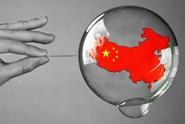Government/Policy

August 11, 2016
CANACERO Praises AD Duties on Galvanized Sheet and Wire Rod from China and Taiwan
Written by Sandy Williams
Mexican steel association CANACERO welcomed antidumping duties placed on galvanized sheet steel and wire rod imported from China and Taiwan. The Mexican Ministry of Economy placed duties of up to USD$0.563 per kilogram on galvanized sheet from China and Taiwan and USD$0.49 per kilogram on wire rod from China.
Said CANACERO in a statement: “Unfair imports, fueled by production overcapacity in China and predatory practices from other countries, have seriously distorted the global steel markets and constitute the main threat to the domestic steel industry and its value chain; illegally capitalizing on domestic consumption to the detriment of the production plant, jobs, investment, product quality, research and development.”
According to CANCERO, 29 investigations of unfair trade practices were resolved during the current administration, three times of that of the previous two presidential terms. The main targets of the investigations were China, Russia, Ukraine, India, Spain, Korea, Japan, and Taiwan. In 2015 imports of steel products represented 47.3 percent apparent national consumption. As a result capacity utilization dropped to 60 percent and more than 10 thousand jobs were lost.
Mexico has seen a surge in manufacturing investment but the continued distortion of the steel market by overcapacity in China, subsidies, state enterprises, dumping and currency manipulation has hurt the ability of domestic manufacturers to compete, said CANACERO.
“In this context, the federal government has recognized the need to use all legal mechanisms that Mexico has in the WTO to defend the national production and jobs,” said CANACERO.
“We recognize and appreciate the actions that the federal government through the Ministry of Economy has taken in defense of national production and jobs.”







